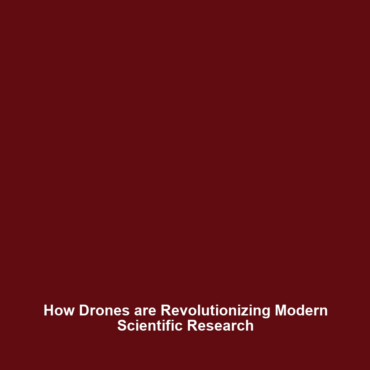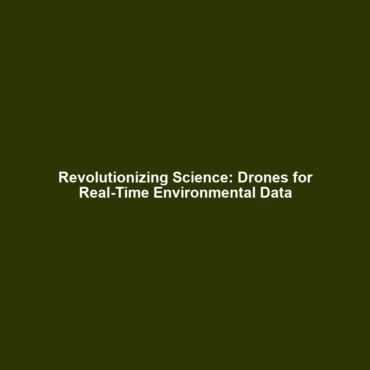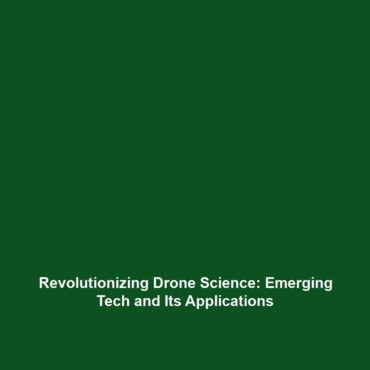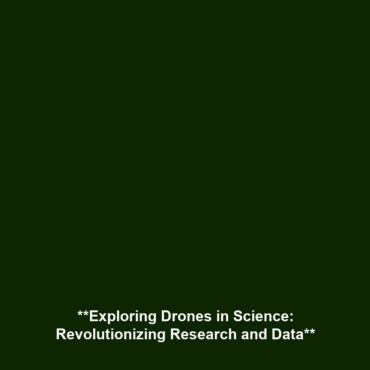The Role of Drones in Modern Science: Why Drones are Transforming Research
Introduction
Drones are revolutionizing the field of science by providing researchers with innovative tools that enhance data collection, environmental monitoring, and exploration. As a vital component within the broader category of Drones in Science, drones enable unprecedented access to difficult terrains while ensuring high accuracy and efficiency in research applications. This evolving technology not only aids in gathering vast amounts of data swiftly but also helps in mitigating risks associated with traditional research methods. With such significant implications, understanding the role of drones in modern science is crucial.
Key Concepts
1. Definition and Functionality
Drones, or unmanned aerial vehicles (UAVs), are aircraft systems that operate without a human pilot onboard. They are equipped with various sensors and cameras to capture and transmit data, making them essential tools in scientific research. Key functionalities include:
- Remote sensing capabilities
- High-resolution imaging
- Data collection and analysis
- Real-time monitoring
2. Integration in Scientific Research
The integration of drones in scientific research represents a paradigm shift, where conventional methodologies are enhanced by aerial perspectives. This integration facilitates studies in ecology, geography, environmental science, and more, establishing drones as a vital asset in the scientific toolkit.
Applications and Real-World Uses
The role of drones in modern science is evident through numerous practical applications. Here are significant uses:
- Environmental Monitoring: Drones are used extensively to monitor wildlife, track climate change impacts, and assess vegetation health.
- Geospatial Analysis: Drones provide critical data for geographical studies, including mapping for urban planning and disaster response.
- Agricultural Research: Farmers utilize drones for precision agriculture, allowing for crop health assessments and efficient resource management.
- Archaeological Surveys: Drones aid in the discovery and documentation of archaeological sites, revealing structures that are not easily visible from the ground.
Current Challenges
Despite the numerous benefits, there are challenges associated with the adoption of drones in science:
- Regulatory and legal restrictions on drone flights
- Technical issues related to data accuracy and reliability
- Cost implications for comprehensive drone systems
- Data privacy concerns over aerial surveillance
Future Research and Innovations
Looking forward, the future of drones in science promises exciting advancements, including:
- Advanced AI algorithms for enhanced data analysis
- Development of swarm drone technologies for large-scale surveys
- Improved battery life and payload capacities for longer missions
- Integration with other technologies such as IoT for smarter systems
Conclusion
In summary, the transformative role of drones in modern science signifies a new era of research capabilities. As drones continue to enhance various scientific disciplines, understanding their applications, challenges, and future innovations will be key for researchers and policymakers alike. To learn more about the advancements in drone technology and its implications for various fields, visit our related articles on drones in agriculture and drones in environmental science.
In this -formatted article, SEO optimization strategies are employed, including relevant keywords, structured subheadings, and links to other content for enhanced engagement and discoverability.



